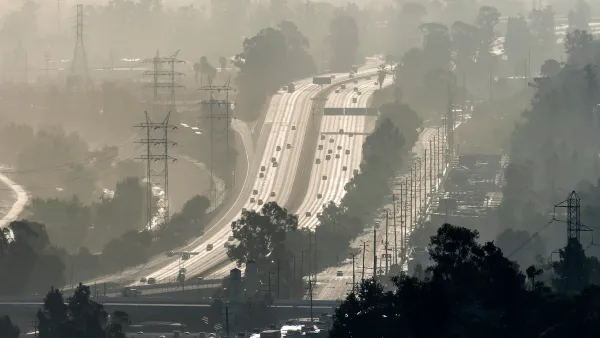While California's high speed rail project will be beneficial for the environment by turning polluting car and plane trips into zero-emission travel by train, there are formidable environmental challenges it must overcome in the construction phase.
Ralph Vartabedian reports on the environmental challenges the high speed rail project faces that will affect the cost and the timeline for what "would be the largest infrastructure project in the nation".
Potential threats to endangered species, diesel emissions from construction equipment, and wetland impacts, are a few of the obstacles the High Speed Rail Authority must confront.
"A wide array of state and federal agencies is examining those effects and, over the next several months, will issue scientific findings that could affect the cost and schedule of construction. Beyond the regulators, environmental lawsuits brought by the powerful California agriculture industry are threatening to further delay work". And the large environmental groups have already voiced their opposition to streamlining the state's environmental law.
Among the most difficult issues will be air quality, which is regulated across eight counties by the San Joaquin Valley Air Pollution Control District. The district worries that the construction project would exacerbate already problematic levels of nitrogen oxides, particulates and volatile compounds.
The district is taking the position that the rail construction should make no net increase in emissions. If the cleanest diesel equipment still adds to emissions, then the district wants "financial mitigation" so it can reduce pollution from other sources, a SJVAPCD spokesman said. Even the increased population that the rail project would generate would need to be mitigated, he said."
In addition to air quality are the impacts to wetlands and other bodies of water - regulated in part by the Army Corps of Engineers.
"We anticipate there to be unavoidable impacts, given the sheer magnitude of the project," said Susan Meyer, a senior project manager at the Army Corps of Engineers. The law requires that any impacts be avoided or minimized. The Army could require "compensatory mitigation" under its permits, Meyer said.
Earlier, The Fresno Bee reported on the delayed improvement the electric train will have on air quality. "But any reductions in air pollution won't start for at least a decade, when the trains would start carrying passengers between Merced and the Los Angeles Basin. Meanwhile, building the system in the San Joaquin Valley is expected to pump tons of dust, greenhouse gases and other pollutants into the air. International experts warn it could take years for the benefits of train ridership to make up for the harm caused during construction", wrote Tim Sheehan.
FULL STORY: Environmental objections in path of bullet train

Analysis: Cybertruck Fatality Rate Far Exceeds That of Ford Pinto
The Tesla Cybertruck was recalled seven times last year.

National Parks Layoffs Will Cause Communities to Lose Billions
Thousands of essential park workers were laid off this week, just before the busy spring break season.

Retro-silient?: America’s First “Eco-burb,” The Woodlands Turns 50
A master-planned community north of Houston offers lessons on green infrastructure and resilient design, but falls short of its founder’s lofty affordability and walkability goals.

Test News Post 1
This is a summary

Analysis: Cybertruck Fatality Rate Far Exceeds That of Ford Pinto
The Tesla Cybertruck was recalled seven times last year.

Test News Headline 46
Test for the image on the front page.
Urban Design for Planners 1: Software Tools
This six-course series explores essential urban design concepts using open source software and equips planners with the tools they need to participate fully in the urban design process.
Planning for Universal Design
Learn the tools for implementing Universal Design in planning regulations.
EMC Planning Group, Inc.
Planetizen
Planetizen
Mpact (formerly Rail~Volution)
Great Falls Development Authority, Inc.
HUDs Office of Policy Development and Research
NYU Wagner Graduate School of Public Service



























